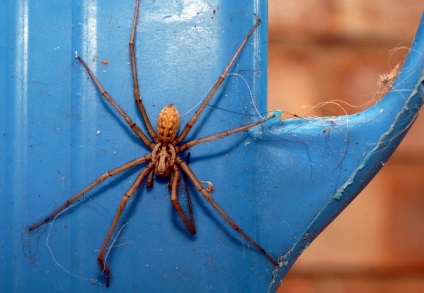Spider reports crawl in

Biology enthusiasts across the UK have been busily reporting arachnid sightings in response to the Society’s first ever house spider survey.
Anyone who sees a spider indoors is encouraged to report their sighting online or download our app to help identify the spider and send details to us. The project builds on the success of the Society’s flying ant survey, which has received over 10,000 responses since it was launched last year.
The large, hairy house spiders commonly seen in UK homes belong to the Tegenaria genus. Each autumn, male house spiders come indoors in search of a mate. In Tegenaria spiders, males are readily distinguished from females by what look like a pair of ‘boxing gloves’ protruding from near the spider’s mouth on their pedipalps. These pedipalps are used to transfer sperm into the female.
Dr Rebecca Nesbit, from the Society of Biology, said entomologists may be able to gain valuable insights into when house spiders mate. “The number seen in houses increases in the autumn, and we want to know the timing. Is it the same time everywhere in the UK? Is it the same time each year? Is it related to weather conditions?”
Professor Adam Hart from the University of Gloucestershire said: “Many species of spider can take a wrong turn and end up in homes by mistake. These generally die unless they find their way back out as it is too warm and dry in our homes and there is no food available to them. A small number of spiders, however, have adapted to living indoors. The Spider in da House app also has photos and information to help identify the spiders we share our homes with.”


